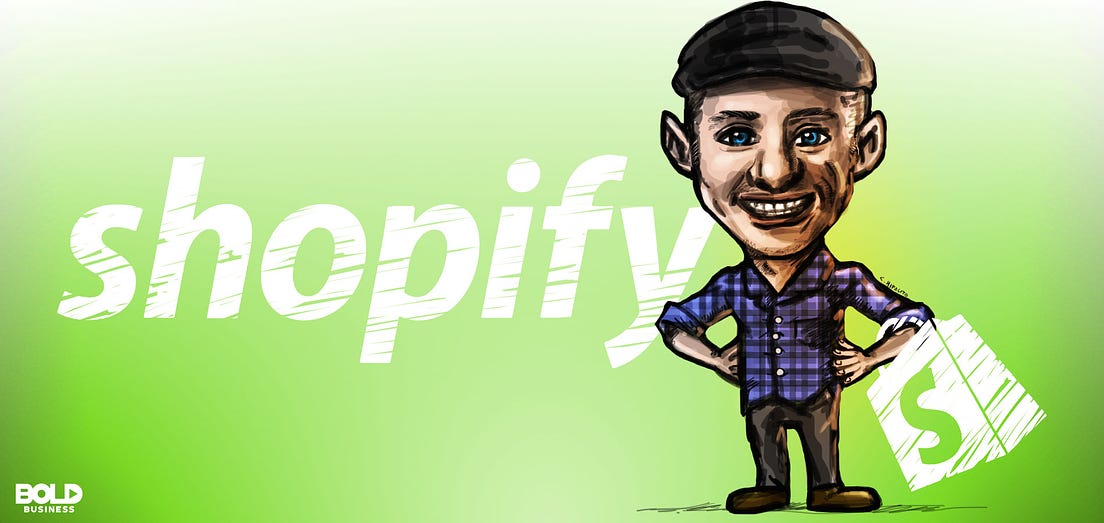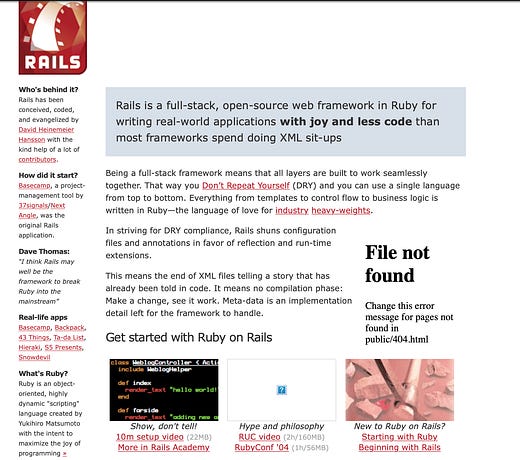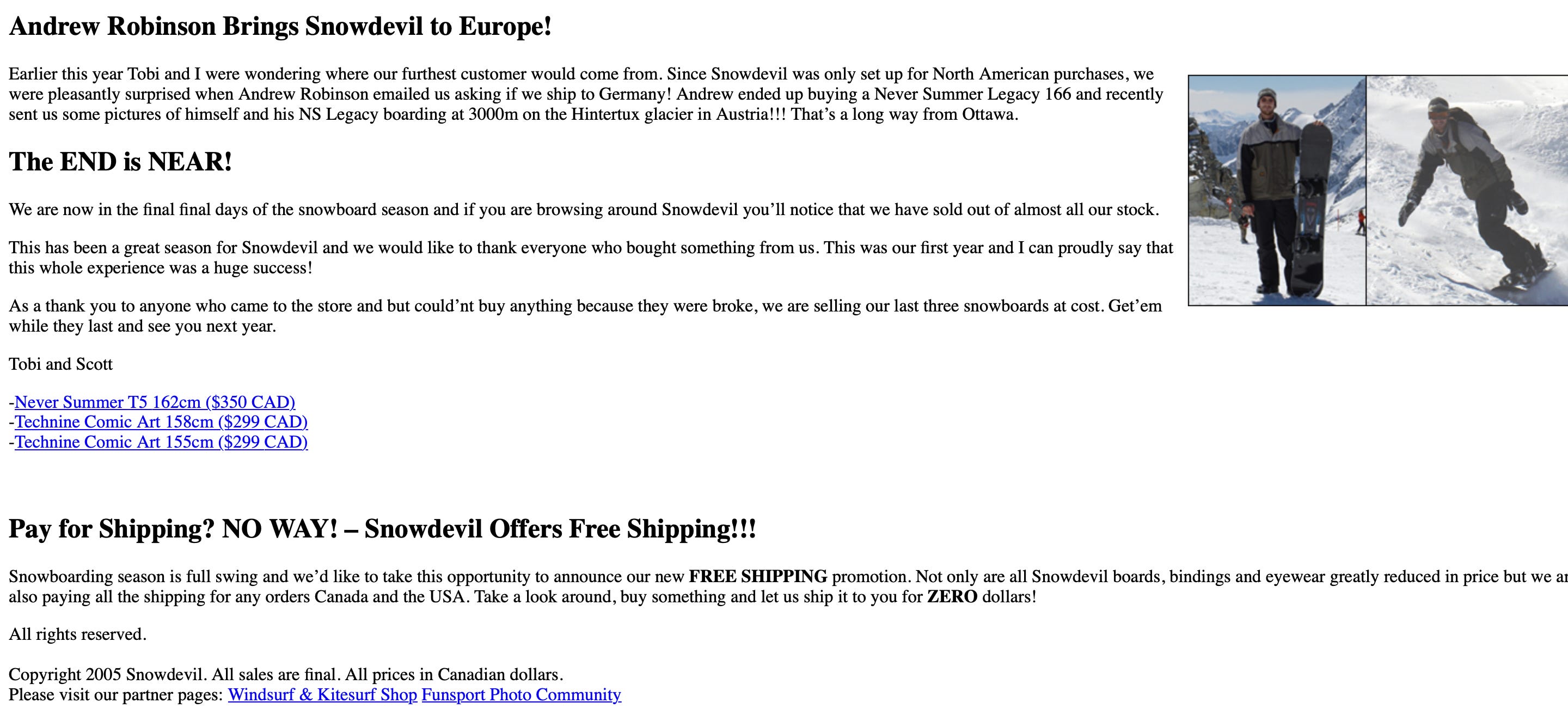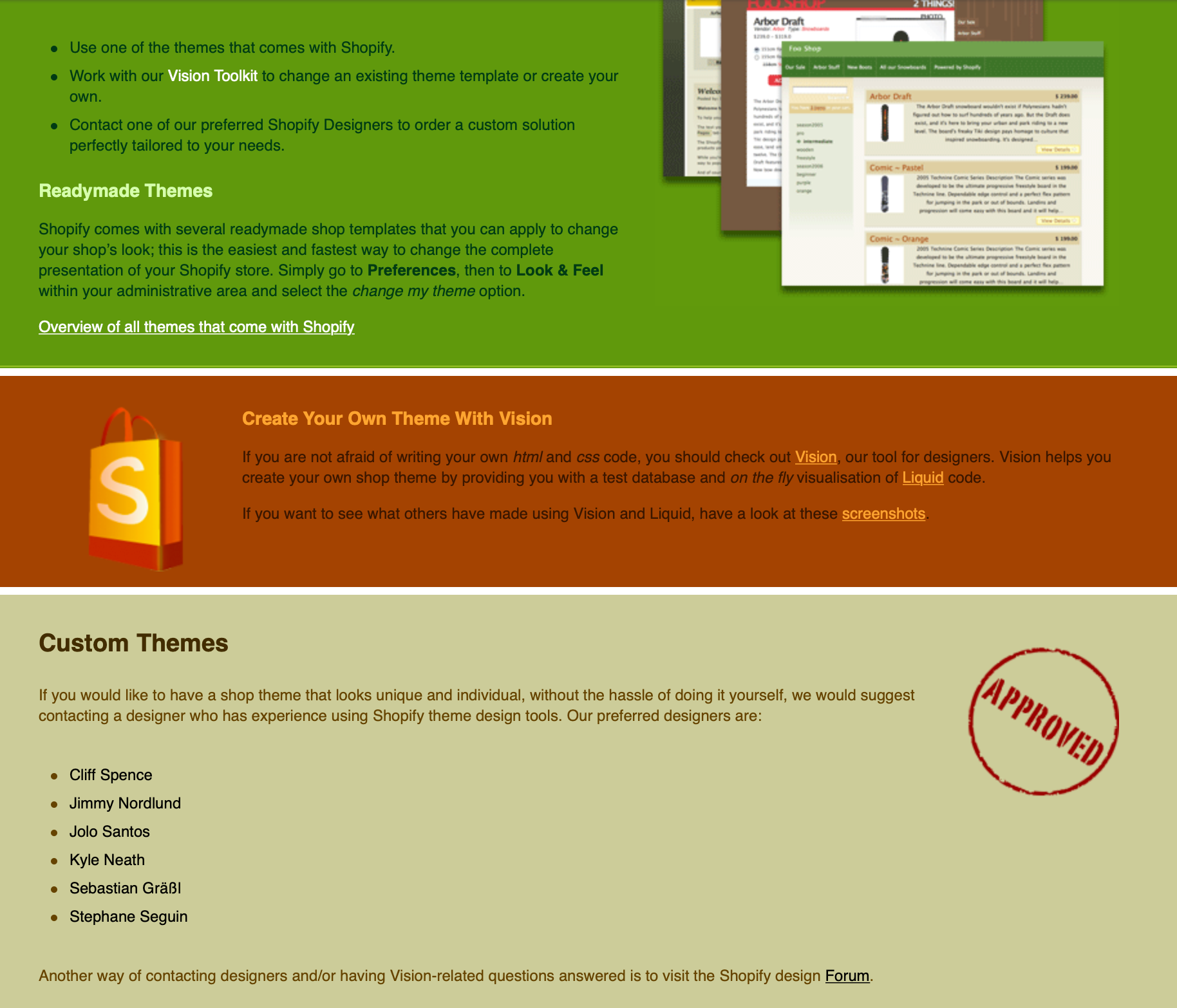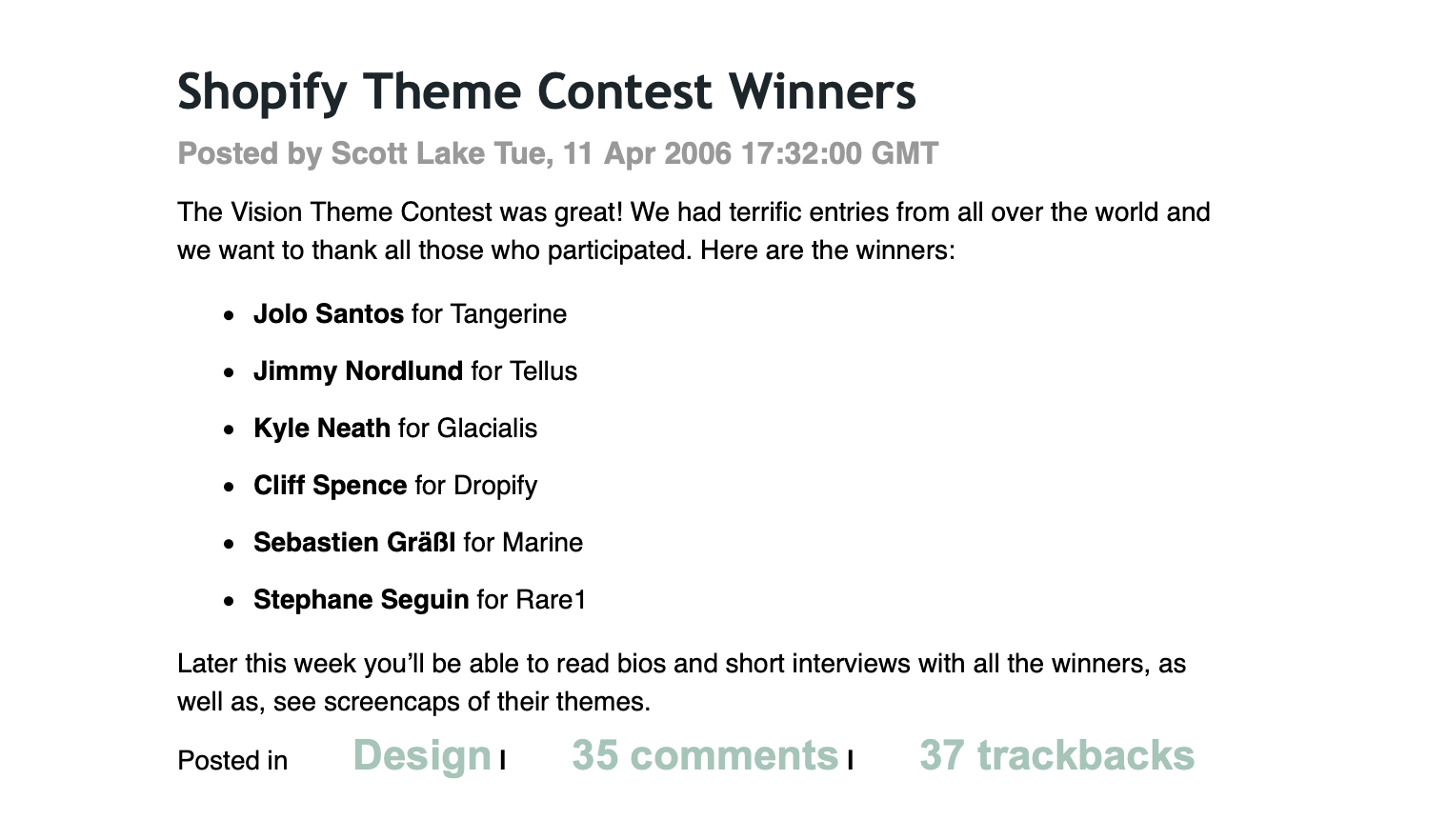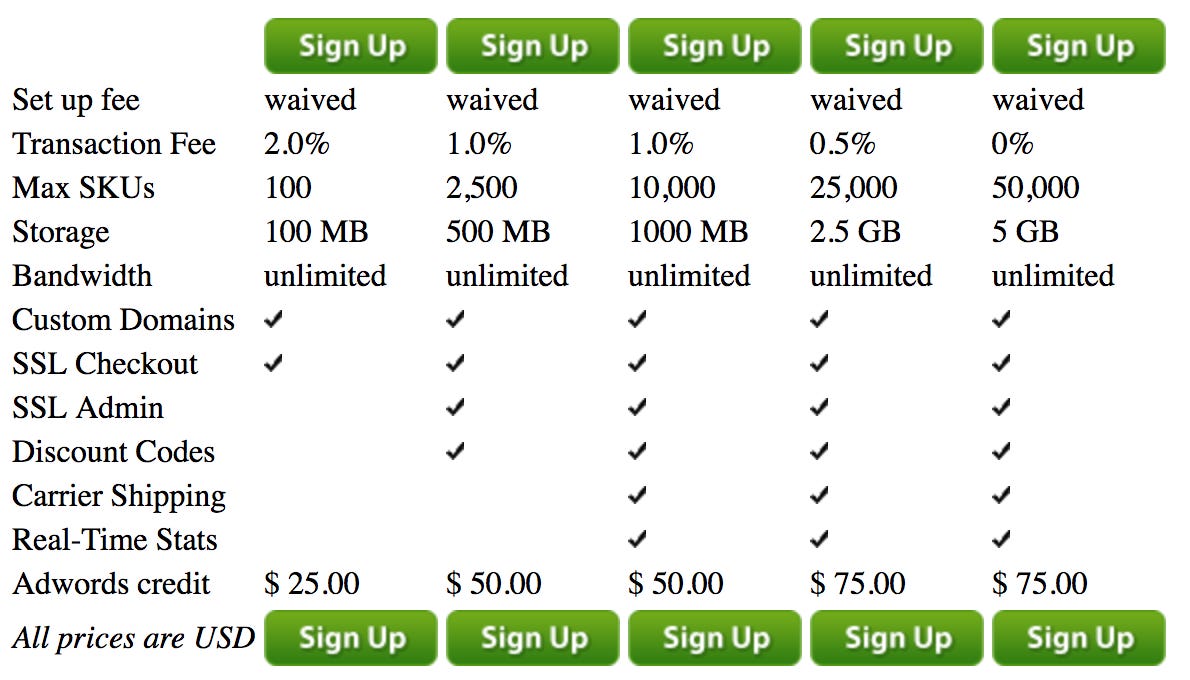First 1000 - 🛍Shopify
Hello Folks, This week, we are doing a deep dive about how Shopify got their first 1000 customers. A lot of you have reached out to me asking to cover more B2B, Fintech, Live Audio, Productivity, No Code and Enterprise companies. I can only do one at a time unfortunately :/ so bear with me please 🙅. Also THANK YOU for spreading the love <3, we have over 1000 new members SINCE WEDNESDAY!!! THIS IS CRAZY 🤯. Brought to you by John Gannon’s VC List Founding Story: Tobias Lütke moved to Canada in 2002 to be with his girlfriend during her Masters's Degree in Ottawa. But the ways immigration laws worked in Canada meant that Tobi could not get a job until he got his permanent residency (which takes a while), but it was perfectly legal to start a business. So he figured Snowboarding + Canada + The Internet sounded like a winning strategy in life...I can't get a job anyways. what could ever go wrong? And so Snow Devil was born! First 400 CustomersShopify is one of those companies that didn't just start by accident, but they also got their first 400 customers entirely by accident. What happened was as Tobi was trying to set up Snow Devil with Yahoo Stores. Still, Yahoo Stores at the time was primarily built for companies with large scale and budgets; there was no easy way to manage your inventory, accepting payments...you had to do that on your own, companies that used Yahoo Stores were already at a scale that they would spend 30-40k/month just managing different aspects of the website (such as Supply Chain, Payment Provider..etc., etc.). Tobi didn't have that kind of cash to hire a team to set up and Maintain Snowdevil, he tried out a few other providers such as Miva, OsCommerce but it didn't do it for him. Around the same time, this dude we now know as DHD, who was creating a new programming language Ruby on Rails, and if you know developers, you know how much seriously they take their open-source projects. Now Ruby was excited at the time in the developer community because one of the philosophies of creating the language was "Do Not Repeat Yourself." The architecture promised orders of magnitude less code to manage a full-stack application. What they needed was to prove the "commercial viability" of the language. People can use Ruby on Rails to build complex real-life applications that are way faster and way less complicated to code than using other languages. So Ruby on Rails had this excellent feature on the sidebar"Real-life apps" (see above) that showcased some of the applications that the community built using the language. Tobi figured that building Snowdevil on this exciting new platform would be way less headache than forcing Yahoo Stores to do the things he wanted. Maybe, even though he would never admit it, Tobi just missed his programming job a tiny bit and used Ruby on Rails as an excuse to get back to writing some code (we will never know 🤷♂️). Anyhow, so as Tobi was building SnowDevil on top of Ruby, he got to see the team of developers building Ruby on Rails, started providing some feedback, and because it was open-source, even started contributing the language. A few months in, he became one of the core contributors to the language (I told you he missed programming). To be fair, though, all the core contributors were also working on their projects on top of Ruby; it was just a fascinating time. Everyone was fascinated with this new framework...it was like he Notion for developers back in 2005. So Tobi as a core contributor to the community put Snowdevil there on the Ruby Community website as one of the "Real-life apps" built. People like it and a handful of them asked if he could help them make something similar or if they could outright license the code from him. At first, he would help but then, as the Ruby community grew, so made the requests. So he put a forum on the website where people who wanted to get his code template could sign up so he wouldn't be inundated with requests. He moved on to continue selling Snowboards and had a pretty profitable first year. But Snowboarding is a seasonal business, so as the summer kicked in, Tobi went back to figure out wtf to do with those 400 people from the Ruby Community that wanted to license their Software...he didn't build Snowdevil in a way that we could fork(i.e., copy) the code and hand it off to another developer. Designers were the next target.Unsurprisingly, Tobi was more excited about the opportunity of the software business he stumbled upon than he was about SnowDevil (FYI, they sold out of EVERYTHING in May...SnowDevil was working). Anyway, Tobi reached out to a friend of his girlfriend " Daniel Weinand" to help him design some of the platform templates that we now know as Shopify. Daniel started recruiting some other designer friends to build templates for Shopify. Shopify, in return, prominently offered those designers a space on their website, recognizing their efforts and putting them in touch with potential clients. People are selfish creatures, like when their name is on the website, so Shopify slowly started making its way into Weinand's friends' extended circle of designers. Shopify embraced designers as well. They ran Theme competitions every month and would do a remarkably lengthy profile on however created the best theme that month. Featured designers would share those profiles; they got more designers onboard...etc..etc. Bumps along the way. Another year would go by (2007), and Shopify would not hit its 1000 customer mark. Shopify was growing so slowly because of their freemium model. Shopify worked at the beginning because everything was free, and they only took a 3% cut (on top of Paypal's fees at the time) for every item sold. So successful businesses doing 7-8 figures in revenue did not want to use the platform; they figured they could use that same money to build their custom website, and many smaller websites created would not sell anything. When Tobi switched their business model from free to a small subscription ($25-$75), things started to go bonkers. How did things go, Bonkers? Shopify, from its inception, was built with a template engine. Still, to go beyond their designer and ruby on rails community, they wanted Shopify to be synonymous with creating an online store. So Tobi and the team asked the question...what do people do before and during starting an online store. The list goes something as follows: 1 - They search for a name generator for their business 2- The look for a logo maker 3- They try to come up with a slogan and then search for Slogan online 4- They look for Stock images to use 5- They discover they need an image resizer 6- They would probably look for templates for things like a pay stub or gift certificate. So Shopify would spin up a mini-tool with a branded footer trying to accomplish each of those tasks for free. The idea was every step of the way when you are trying to start an online business, you would "stumble" upon Shopify's logo in the footer, and just subconsciously, your brain starts making that association "SHOPIFY == CREATING AN ONLINE STORE." Needless to say...the strategy worked :) And thats it, folks...this is everything Shopify did to get their first 1000 customers. See you on Sunday 😉, If you liked this post from First 1000, why not share it? |
Older messages
Special Announcement
Sunday, March 28, 2021
Hey All,I'm messaging with some news. I'm joining a new social app called Faves, and I'd love you to come with me! Faves is a new social platform where leading creators share the content
📅 Superpowered (YC W21)
Wednesday, March 24, 2021
How Superpowered used Product Hunt to get hundreds of paying customers?
🚖Uber in 1 minute
Sunday, March 21, 2021
How Uber got its first 1000 customers
🚀 We're live on Product Hunt
Sunday, March 21, 2021
A quick favor...
📸 Instagram in 1 minute.
Sunday, March 14, 2021
How instagram got its first 25k customers in one day?
You Might Also Like
🚀 Ready to scale? Apply now for the TinySeed SaaS Accelerator
Friday, February 14, 2025
What could $120K+ in funding do for your business?
📂 How to find a technical cofounder
Friday, February 14, 2025
If you're a marketer looking to become a founder, this newsletter is for you. Starting a startup alone is hard. Very hard. Even as someone who learned to code, I still believe that the
AI Impact Curves
Friday, February 14, 2025
Tomasz Tunguz Venture Capitalist If you were forwarded this newsletter, and you'd like to receive it in the future, subscribe here. AI Impact Curves What is the impact of AI across different
15 Silicon Valley Startups Raised $302 Million - Week of February 10, 2025
Friday, February 14, 2025
💕 AI's Power Couple 💰 How Stablecoins Could Drive the Dollar 🚚 USPS Halts China Inbound Packages for 12 Hours 💲 No One Knows How to Price AI Tools 💰 Blackrock & G42 on Financing AI
The Rewrite and Hybrid Favoritism 🤫
Friday, February 14, 2025
Dogs, Yay. Humans, Nay͏ ͏ ͏ ͏ ͏ ͏ ͏ ͏ ͏ ͏ ͏ ͏ ͏ ͏ ͏ ͏ ͏ ͏ ͏ ͏ ͏ ͏ ͏ ͏ ͏ ͏ ͏ ͏ ͏ ͏ ͏ ͏ ͏ ͏ ͏ ͏ ͏ ͏ ͏ ͏ ͏ ͏ ͏ ͏ ͏ ͏ ͏ ͏ ͏ ͏ ͏ ͏ ͏ ͏ ͏ ͏ ͏ ͏ ͏ ͏
🦄 AI product creation marketplace
Friday, February 14, 2025
Arcade is an AI-powered platform and marketplace that lets you design and create custom products, like jewelry.
Crazy week
Friday, February 14, 2025
Crazy week. ͏ ͏ ͏ ͏ ͏ ͏ ͏ ͏ ͏ ͏ ͏ ͏ ͏ ͏ ͏ ͏ ͏ ͏ ͏ ͏ ͏ ͏ ͏ ͏ ͏ ͏ ͏ ͏ ͏ ͏ ͏ ͏ ͏ ͏ ͏ ͏ ͏ ͏ ͏ ͏ ͏ ͏ ͏ ͏ ͏ ͏ ͏ ͏ ͏ ͏ ͏ ͏ ͏ ͏ ͏ ͏ ͏ ͏ ͏ ͏ ͏ ͏ ͏ ͏ ͏ ͏ ͏ ͏ ͏ ͏ ͏ ͏ ͏ ͏ ͏ ͏ ͏ ͏ ͏ ͏ ͏ ͏ ͏ ͏ ͏ ͏ ͏ ͏ ͏ ͏ ͏ ͏ ͏ ͏ ͏
join me: 6 trends shaping the AI landscape in 2025
Friday, February 14, 2025
this is tomorrow Hi there, Isabelle here, Senior Editor & Analyst at CB Insights. Tomorrow, I'll be breaking down the biggest shifts in AI – from the M&A surge to the deals fueling the
Six Startups to Watch
Friday, February 14, 2025
AI wrappers, DNA sequencing, fintech super-apps, and more. ͏ ͏ ͏ ͏ ͏ ͏ ͏ ͏ ͏ ͏ ͏ ͏ ͏ ͏ ͏ ͏ ͏ ͏ ͏ ͏ ͏ ͏ ͏ ͏ ͏ ͏ ͏ ͏ ͏ ͏ ͏ ͏ ͏ ͏ ͏ ͏ ͏ ͏ ͏ ͏ ͏ ͏ ͏ ͏ ͏ ͏ ͏ ͏ ͏ ͏ ͏ ͏ ͏ ͏ ͏ ͏ ͏ ͏ ͏ ͏ ͏ ͏ ͏ ͏ ͏ ͏ ͏ ͏ ͏ ͏ ͏
How Will AI-Native Games Work? Well, Now We Know.
Friday, February 14, 2025
A Deep Dive Into Simcluster ͏ ͏ ͏ ͏ ͏ ͏ ͏ ͏ ͏ ͏ ͏ ͏ ͏ ͏ ͏ ͏ ͏ ͏ ͏ ͏ ͏ ͏ ͏ ͏ ͏ ͏ ͏ ͏ ͏ ͏ ͏ ͏ ͏ ͏ ͏ ͏ ͏ ͏ ͏ ͏ ͏ ͏ ͏ ͏ ͏ ͏ ͏ ͏ ͏ ͏ ͏ ͏ ͏ ͏ ͏ ͏ ͏ ͏ ͏ ͏ ͏ ͏ ͏ ͏ ͏ ͏ ͏ ͏ ͏ ͏ ͏ ͏ ͏ ͏ ͏ ͏ ͏ ͏ ͏ ͏ ͏ ͏ ͏ ͏ ͏ ͏ ͏
